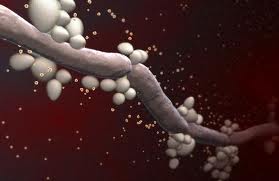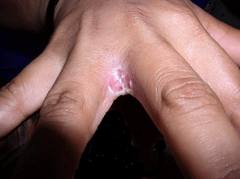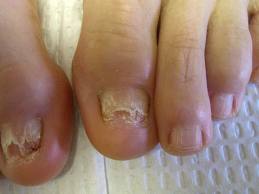 Candidiasis or Candidosis is a yeast infection caused by any Candida species. Candida albicans is the most common agent causing infections in humans. The infection is commonly called ‘thrush’ or ‘moniliasis’.
Candidiasis or Candidosis is a yeast infection caused by any Candida species. Candida albicans is the most common agent causing infections in humans. The infection is commonly called ‘thrush’ or ‘moniliasis’.
Candida occurs everywhere and their infections can affect the body in many ways. From small localized areas of infection in some, to fast spreading multi-system infections in others, Candida infections can be superficial or life-threatening.
Who gets Candida infections?
Candida is normally present in most people. The organism is a commensal i.e. it naturally colonizes the human body without benefiting or damaging it.
A healthy immune system and the presence of other microorganisms, check its uncontrolled multiplication and infections.
It is an opportunistic organism causing an infection only when your immune defenses are lowered enough for it to multiply. Carriers generally don’t develop any symptoms so long as they are healthy.
A low immunity plus Candidiasis is possible in the following situations:
- Diabetes mellitis. Recurring infections in spite of proper treatment is a feature of diabetes. High glucose levels in the blood allow rapid spread of the infection to other body parts by the blood stream.

- Use of broad spectrum antibiotics. This usually kills the other organisms that compete with Candida for growth and allows the yeast to grow unchecked.
- Obesity. The moisture within skin folds provides a suitable environment for yeast growth.
- Intravenous drug abuse. Frequent, unhygienic insertion of drugs via the intravenous route, or long dwelling IV lines can introduce Candida into the blood stream.
- Indwelling catheters in hospitalized patients.
- Severe burns. Loss of normal layers of skin leaves the body exposed to superadded infections like Candidiasis.
- Cancers of the blood cells.
- Reduced numbers of neutrophils (a component of the white blood cells which are the defense cells of our bodies).
- Neonates. Infants less than 7 days old.
- Prolonged steroid (corticosteroid) therapy.
- AIDS. People suffering from AIDS are very susceptible to Candidiasis.
- Stress and poor nutrition. These are known and proven immunosuppressant. It certainly lowers the body’s immune status making it vulnerable to infections.
Symptoms
Affected locations show a lot of itching, burning and soreness. Generally, symptoms depend upon the organ involved.
- In the oral cavity, its presentation is called oral thrush. Most infections are seen in people having AIDS and in infants. Infants may suffer from
- Poor feeding
- Crankiness
- Lethargy.
- Pain
- Blurred vision
- Decreased vision
- Redness, especially after eye surgery
Children with low birth weight or hospitalization for long periods are contributing factors. - Intense itch and profuse creamy-white, curd-like or a whitish-yellow discharge from the vagina is the commonest symptom.
- Soreness and burning.
- Pain during sexual intercourse.
The third trimester of pregnancy, broad spectrum antibiotics, sexual activity (anal sex followed by vaginal sex, without proper cleaning), use of oral contraceptives and HIV infection are some of the most common factors causing vulvo-vaginal thrush. - It presents as discrete lesions on the penis and foreskin. Often the soft tissue of the glans penis has red, inflamed, painful sores and rarely a white discharge from penis. A condition called ‘balanitis’.

- In infants and older children using diapers, it presents within the folds of the skin as ‘diaper (nappy) rash’.
- Nipples and surrounding tissues, in breast feeding women.
- The ears. External ear often gets infected.
- Endophtalmitis, a condition wherein the inner eyeball is inflamed is typical of Candidal infection. The most common symptoms are:
- Nails. It causes chronic paronychia which is painful inflammation of the tissues around the nail. It also causes onychomycosis where the nail grows very poorly and appears disfigured.
- Skin surrounding the nose and margins of the nostrils can be affected.
- In women, a fairly common site is the vulva or vagina. The condition is referred to as vaginal Candidiasis or vaginal thrush.
- The skin folds are prone to a lot of moisture. Obesity, Diabetes, excessive sweating (hyperhidriosis) are common causes of Candidiasis in the skin folds.
Lesions show the following characteristics
Systemic symptoms
Candida spreads throughout the body and causes a multitude of symptoms. Extend of infection, severity, and their consequences largely depend upon the individual infected. Eg : Candidiasis of the esophagus (food pipe) along with mouth infection is highest in people suffering from AIDS.





